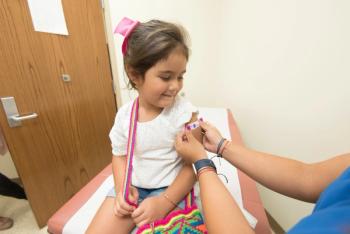
COVID-19 Infection Increases Risk of Deep Vein Thrombosis, Pulmonary Embolism, Bleeding
The risks of deep vein thrombosis, pulmonary embolism, and bleeding events were increased at 3 or more months after COVID-19 infection.
As we come to terms with a future of living with the SARS-CoV-2 virus, research is now delving into the long-term outcomes of
COVID-19 infection has been linked to myocardial infarction and stroke, but studies on COVID-19 increasing the risk of venous thromboembolism have yielded mixed results. One
Using self-controlled case series and matched cohort study methods, the investigators examined data from Swedish people with all levels of COVID-19 disease severity. The study utilized data collected from the Public Health Agency of Sweden’s communicable disease surveillance system, from February 1, 2020-May 25, 2021. For every 1 participant who tested positive, the investigators included 4 who tested negative as controls. Participants were matched for age, sex, county of residence, and date of COVID-19 test.
The investigators calculated the average age and standard deviation of the primary study cohort and for participants with a first or recurring deep vein thrombosis, pulmonary embolism, or bleeding event. They adjusted the results for factors such as participant comorbidities, cancer, surgery, bleeding, and long term anticoagulation treatment. Risk of deep vein thrombosis, pulmonary embolism, and bleeding in COVID-19 individuals was calculated during a control period (before or long after infection) and after COVID-19 diagnosis at various points in time (days 1-7, 8-14, 15-30, 31-60, 61-90, and 91-180).
A total of 1057174 COVID-19-positive people were included in the analysis. The cohort was 51% female and the average age was 40.2 years. The matched control group included 4076342 participants. The results showed COVID-19 infection was associated with a 5-fold increased risk of deep vein thrombosis, 33-fold increased risk of pulmonary embolism, and just under a 2-fold increased risk of bleeding in the 30 days after diagnosis.
A first deep vein thrombosis event occurred in 401 COVID-19 patients and 267 controls. A first pulmonary embolism event occurred in 1761 COVID-19 patients and 171 controls, and a first bleeding event occurred in 1002 COVID-19 patients and 1292 control patients.
Increased risk of deep vein thrombosis was observed up to 3 months after COVID-19, pulmonary embolism up to 6 months after COVID-19, and bleeding up to 2 months after COVID-19. The risk of pulmonary embolism in the acute stage was particularly high. Risks of all 3 adverse events were highest in patients with more severe COVID-19 during the first wave of the pandemic. However, even in non-hospitalized participants with mild COVID-19, the risk of deep vein thrombosis and pulmonary embolism was increased.
These findings were fairly consistent with prior studies on the correlation between COVID-19 infection and thromboembolic events, leading the investigators to conclude COVID-19 is an independent risk factor for deep vein thrombosis, pulmonary embolism, and bleeding.
Newsletter
Stay ahead of emerging infectious disease threats with expert insights and breaking research. Subscribe now to get updates delivered straight to your inbox.
































































































































































































































































































































